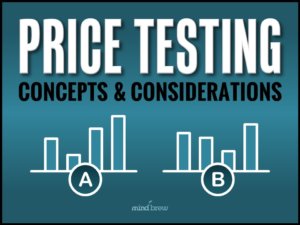Getting a pricing initiative off the ground can be a huge undertaking. Maybe you’re structuring how you mange discounting or rebates. Maybe you’re implementing new quoting or pricing technology. Maybe you’re changing how the sales team is compensated. Either way, you can spend months—sometimes years—getting all of the stakeholders involved, budget approved and milestones outlined.
Yet even with all of that upfront work, pricing initiatives can sometimes struggle to find success—and some might even fail completely. When they do fail, there’s often a primary cause to that failure. Looking across dozens of initiatives that our team has researched, here are five common root causes why pricing initiates fail.
An Ineffective Segmentation Model
Businesses often have many ways to segment customers—maybe by industry or sales territory. When these models already exist, it’s tempting to base a price segmentation model off of one of them. But an effective price segmentation model needs to be based on willingness-to-pay. An off-the-shelf model was often created for another purpose and will rarely be the most effective model for pricing.
Just Reacting to The Competition
It’s natural to react to the competition when you hear they changed their rebate structure or adopted a new pricing technology. Moving forward with a similar initiative can be easy to sell internally, but it can also be a dangerous trap. Just because a competitor is doing it doesn’t mean it’s the right thing for your company—or even for your competitor.
Stakeholders Aren’t On-Board
For an initiative to be successful, involving stakeholders in sales, marketing and product development often means more than a bit of training and some cursory explanations right before the things go live. These stakeholders need to know what the pricing strategy is and how it will change the way they communicate with customers. Involve the right stakeholders from the very beginning and there’s a much better chance than things will go smoothly.
The Value Story Isn’t There
The months of analysis might say that you should be able to command price increases, but your prices are ultimately dictated by the value your customers perceive and receive. You can have the perfect segmentation, tools and training, but it won’t be enough if your value story and customer messaging don’t line up with the perceived value that your customers place on your products.
Tools Come Before Strategy
It can be easy to think getting new systems, tools or software can solve big pricing problems. They often can, but software alone isn’t a panacea—nor is it a substitute for pricing strategy. Pricing technology can be a great starting point, but be sure you know what your end game is and that you’re taking advantage of the best practices of those that have come before you.















